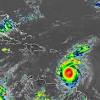Zombie series “All Of Us Are Dead” is more than just a weekend binge

Editor’s note: Minor spoilers for “All Of Us Are Dead” ahead.
Korean zombie series “All Of Us Are Dead” is set in a post-COVID-19 world.
In episode six, On-jo’s father, a firefighter and first responder, mentions this while talking about the amount of time they might need to spend in quarantine due to the mysterious nature of the disease. “It was nine days for MERS, two weeks for Corona, and even three weeks for Ebola.”
The 12-episode series, which is Netflix’s first Korean original offering for 2022, treats the zombie outbreak in the fictional area of Hyosan as an epidemic. Based on the popular webtoon by Joo Dong-geun, the live-action follows high school students who find themselves at ground zero of a mysterious virus that turns its hosts into flesh-eating monsters.
 Yoon Chan-young plays junior high school student Lee Cheong-san in "All Of Us Are Dead." Photo by YANG HAE-SUNG/NETFLIX
Yoon Chan-young plays junior high school student Lee Cheong-san in "All Of Us Are Dead." Photo by YANG HAE-SUNG/NETFLIX
As the agile zombies roam the hallways of the school (and later, the rest of the town) in search of flesh to feast on, the students figure out how to get out alive and the authorities struggle to find answers. It’s stressful, yes. But as you continue watching, you realize that the stress also comes from this premise being so close to home.
In her 2018 Polygon video on zombies, video producer Jenna Stoeber goes back to “a cornerstone truth about horror,” and by extension, zombie media: “it reflects the crises of the culture it’s made in.” In the world of “All Of Us Are Dead,” talk of “martial law,” “quarantine,” and “getting tested” are thrown around as the military scrambles to find a solution to the outbreak — terms that, pre-pandemic, I would have just glossed over with the assumption that nothing like that could ever happen in real life. Two years since this all started, and these words hold new meaning in a world still suffering from COVID-19. It especially hits different after I watch it mere days out of self-imposed quarantine after undergoing a mild bout of said disease.
During the press conference livestreamed from Seoul last Jan. 26, director Lee JQ told reporters that he chose the project because of its setting (most of the action happens within the confined space of the school) and because the main characters are students who are not yet mature adults.
“We often say things like ‘some adults are childish,’” he said. “I felt that it would be extremely interesting and intriguing to look at the choices that these young adults make. And I felt like it could bring a new kind of meaning to the zombie genre.”
And it’s true that the characters of “All Of Us Are Dead” are what make the show so engaging. While most of the fresh-faced cast already had a number of acting credits to their names, the series marked the first time that they took on leading roles — and crushed them.
You can’t help but root for the Hyosan High School students because of how well they represent very real student archetypes and the nuances that come with those roles given the context. There’s the average-but-dependable boy-next-door (Cheong-san, played by Yoon Chan-young) who has a secret crush on his best friend (On-jo, played by Park Ji-hu); the overachieving-yet-silent and intimidating class president (Nam-ra, played by Cho Yi-hyun), and the jock-slash-reformed bully with a weird quirk (Su-hyeok/”Baresu,” played by Lomon).
 You can't help but root for the Hyosan High School students because of how well they represent real student archetypes. Photo by YANG HAE-SUNG/NETFLIX
You can't help but root for the Hyosan High School students because of how well they represent real student archetypes. Photo by YANG HAE-SUNG/NETFLIX
In her Polygon video, Stoeber also pointed to the community-centered wave of zombie media, such as“The Walking Dead” and “The Last of Us.” The stories these games and shows tackle are reflective of the growth of their creators; a move towards the safeness of a familial community and how characters find their role within them.
This is where the rest of the cast comes in: this show would not be what it is without the other main players in the school, especially Cheong-san’s classmates: the stubborn-but-lovable Gyeong-su (played by Ham Sung-min), awkward-but-ingenious megane (glasses boy) Oh Joon-yeong (played by An Seoung-Kyun), the class clown with a passion for singing (Dae-su, played by Lim Jae-hyeok), team player Wu-jin (played by Son Sang-yeon), best friends Ji-min (played by Kim Jin-yeong) and Hyo-ryeong (played by Kim Bo-yoon). There’s also much to root for in the second group of student survivors led by seniors Seung-lee and Eun-saem, with juniors Ho-eun and Han-yeol.
On the other side of things, there are the characters you learn to hate with a passion. Yoo In-soo is terrifying as school bully Gwi-nam. Lee Yoo-mi, who Netflix viewers may know from her role as Ji-yeong in “Squid Game,” shared how she worked hard to make her character Na-yeon as annoying as possible. She would ask Sung-min (who plays Gyeong-su) questions like “am I upsetting you enough?” or “am I getting on your nerves enough?”
 "Squid Game's" Lee Yoo-mi (left) worked very hard to make her character Na-yeon as annoying as possible. Photo by YANG HAE-SUNG/NETFLIX
"Squid Game's" Lee Yoo-mi (left) worked very hard to make her character Na-yeon as annoying as possible. Photo by YANG HAE-SUNG/NETFLIX
 Yoo In-soo is terrifying as school bully Gwi-nam. Photo by YANG HAE-SUNG/NETFLIX
Yoo In-soo is terrifying as school bully Gwi-nam. Photo by YANG HAE-SUNG/NETFLIX
One thing that the series directly translated from the webtoon was the uncensored, unfiltered side of South Korea. Boil-ridden, guts-out, bloodthirsty zombie imagery aside, you can tell that this drama wasn’t meant to be visually pleasing. Set outside of Seoul, the usual shots of sparkling skyscrapers are replaced with the grit of tenement buildings. The show’s coloring isn’t altered to beautify, and actors are made up in a manner that shows their imperfections, effectively making them look convincing as high school students. They also swear a lot (rare is a scene where a character doesn’t say some some iteration of “sibal,” a common Korean profanity comparable to the English “fuck”).
Chun Sung-il’s script condensed and shuffled around the originally slow-paced webtoon plot. The first two episodes hit the ground running, with cinematic action shots, intense stunts, and all the blood and gore that Director JQ felt was essential to immerse both the actors and viewers alike.
During the press con, the cast also shared that the slow and detailed zombie transformation process is something to look forward to. As in “Kingdom,” and similar Korean zombie shows and films, the zombies in “All Of Us Are Dead” are fast. In a behind the scenes video, it’s shown how a dancer and actor choreographed all of the zombies. They were so terrifying that actors In-soo and Chan-young even revealed that they puked on the first day of training because of the sheer intensity.
 On-jo (Park Ji-hu) comes head to head with a schoolmate-turned-zombie. Photo by YANG HAE-SUNG/NETFLIX
On-jo (Park Ji-hu) comes head to head with a schoolmate-turned-zombie. Photo by YANG HAE-SUNG/NETFLIX
Early on in the series, the characters already acknowledges that their schoolmates have turned into zombies, with Cheong-san asking everyone if they’ve seen “Train to Busan.” Once that’s established, they do everything they can to find help. As if clearing levels in a video game, the group passes through several stages using ordinary objects like desks and cleaning materials combined with skills learned as they go — taking shelter in classrooms, the broadcast studio, and the science lab inside the school, among other places — to work their way upwards to get to the rooftop.
Holding on to the hope for survival without depending on adults or authority figures is a major concept that the director wants to emphasize in the series. When the students realize that survival is solely in their hands, it’s heartbreaking. The tears and frustration they displayed during these moments were so tangible. You could really feel the exhaustion brought on from looking back at how much has already been done, so much already lost, and the frustration of thinking that there seems to be no end in sight. As we near the second anniversary of the very first lockdown announcement in the Philippines, these are very real emotions that resonate more given the current situation we’re in.
Since the show attempts to tackle issues of morality and justness, and the concept of losers and winners, corruption, and school violence within its 12-episode run time, some of these deeper meanings get lost in the narrative. After all, this is a lot to unpack for a show where emotions constantly run high, and the fact that this is all happening while these characters are fighting for their lives does not help. Hopefully this is something they can address if a second season is announced.
Sure, “All Of Us Are Dead” is an entertaining show to binge and even go back to. But if there’s one thing that Director Lee JQ wants viewers to take away from the series, it’s this: “Whatever happens within a school, there are perpetrators, there are victims. That’s exactly what happens in our society as well. Sometimes, due to the selfishness of a particular group, others are victimized and get hurt.”
As this country approaches the turbulent waters of the next few months, I hope this is something we take into account well.
***
All Of Us Are Dead is out now on Netflix.


 South Africa
South Africa Argentina
Argentina  Australia
Australia  Austria
Austria  Brazil
Brazil  Canada
Canada  Germany
Germany  Ireland
Ireland  Italy
Italy  Malaysia
Malaysia  Mexico
Mexico  New Zealand
New Zealand  Poland
Poland  United Kingdom
United Kingdom  United States
United States 

















